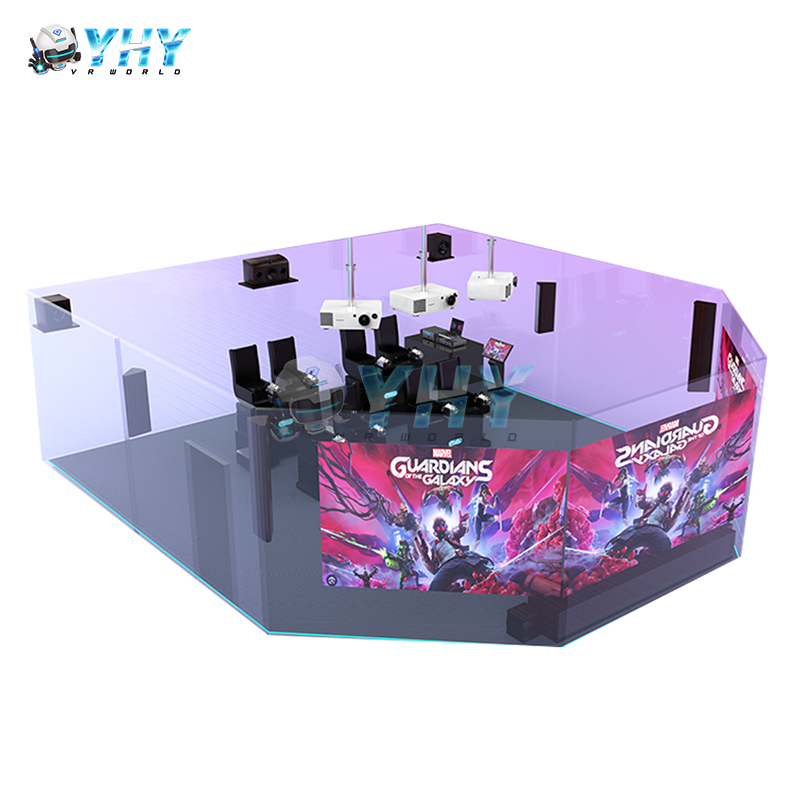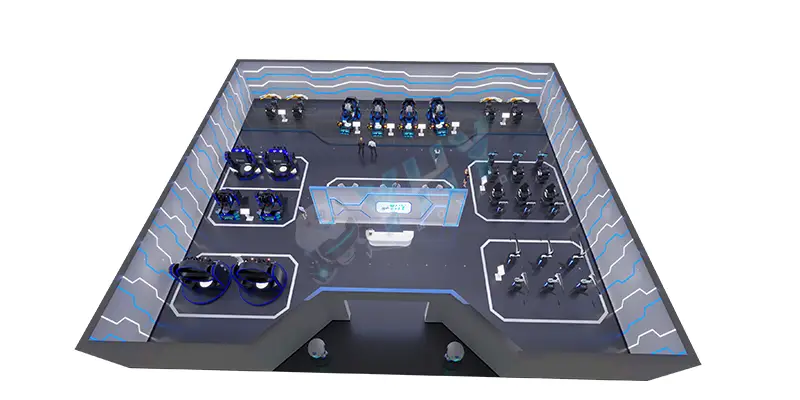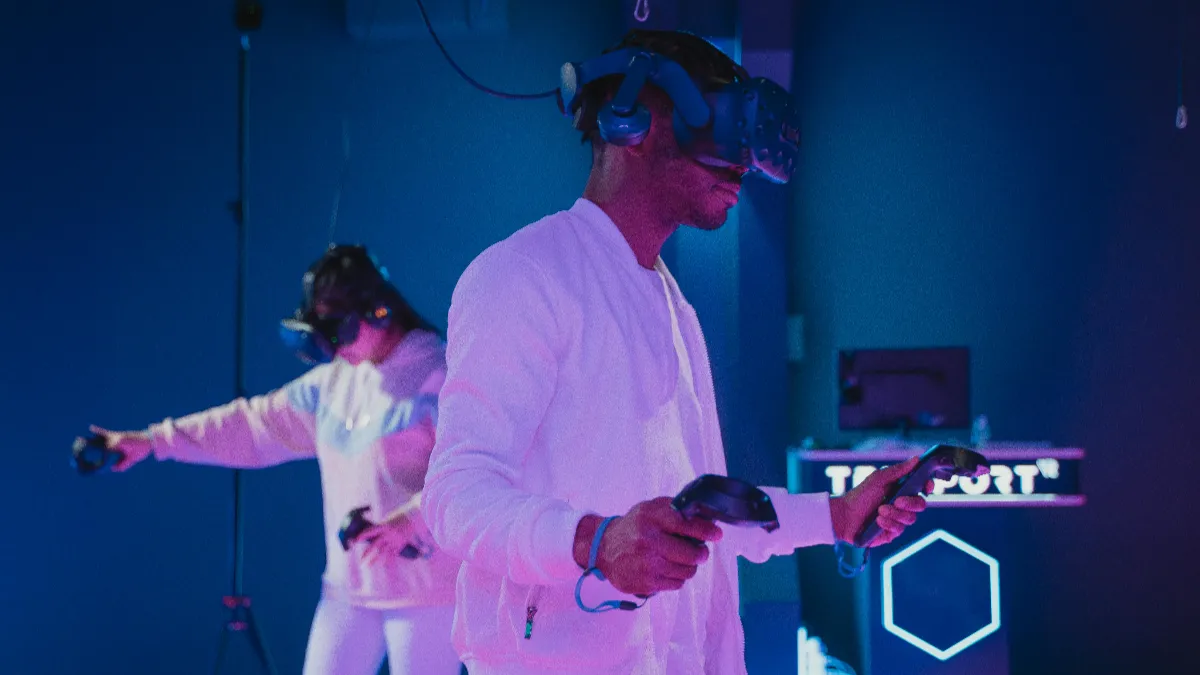Durante la última década, La realidad virtual ha pasado de ser un concepto futurista a una tecnología comercialmente viable., encontrar aplicaciones en juegos, educación, capacitación, y entretenimiento inmersivo. pero en 2026, Con la industria de la realidad virtual madurando y la competencia intensificándose, La pregunta que se hacen muchos inversores potenciales es: ¿Sigue siendo un buen momento para invertir en realidad virtual??
En este artículo, Exploraremos el caso de negocio para la inversión en realidad virtual., los costos y el retorno de la inversión de lanzar un negocio de realidad virtual, y por qué los simuladores de movimiento son uno de los segmentos más rentables de la industria.
¿La realidad virtual sigue siendo una buena inversión? 2026?
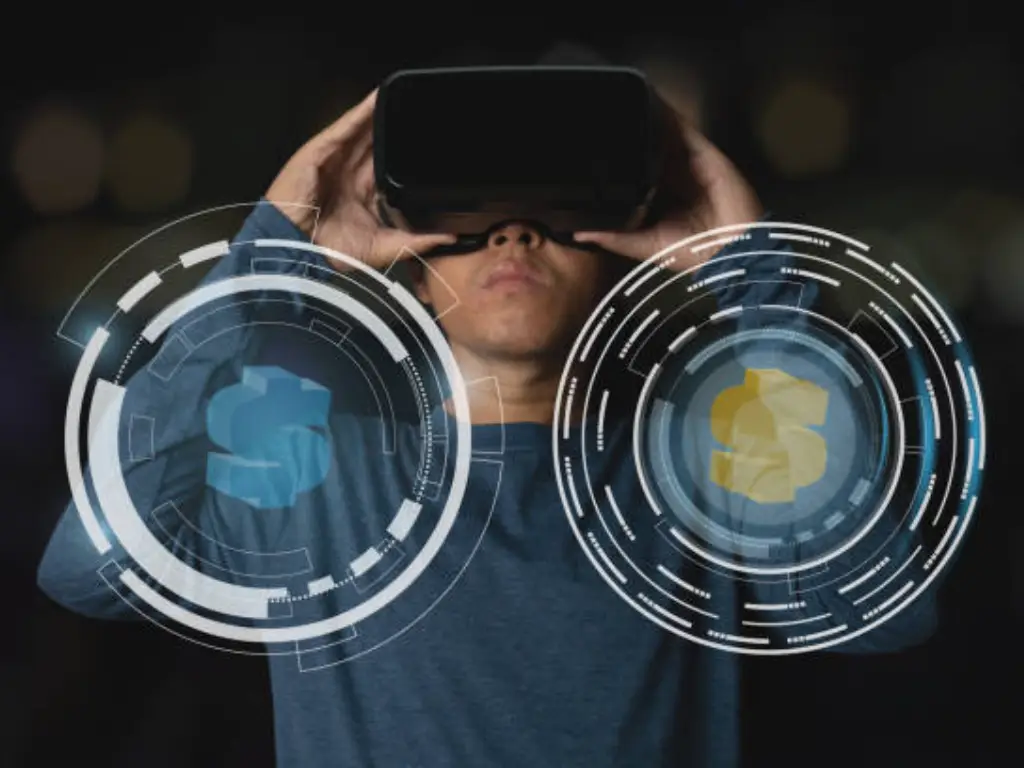
Sí, La realidad virtual sigue siendo una gran oportunidad de inversión en 2026, especialmente para aquellos que apuntan al sector del entretenimiento basado en la ubicación.. Con un crecimiento constante del mercado, hardware asequible, y la creciente demanda de los consumidores, La realidad virtual sigue ofreciendo potencial empresarial escalable.
El crecimiento del mercado de realidad virtual sigue siendo fuerte
De acuerdo a Estadista, Se espera que la industria mundial de la realidad virtual crezca a partir de $28.42 mil millones en 2023 a $57.55 mil millones por 2027, con una tasa de crecimiento anual de más 18%. Esta expansión va más allá de los juegos, con una creciente adopción en la formación, educación, y espacios públicos de entretenimiento.
Los costos más bajos hacen que la entrada sea más accesible
Lanzar un negocio de realidad virtual es ahora más asequible que nunca. Auriculares independientes como Meta Quest 3 y PICO 4 ya no requiere PC de alta gama. Los simuladores de movimiento básicos cuestan tan solo $6,000, facilitar la puesta en marcha de las pequeñas empresas.
La demanda de los consumidores por experiencias inmersivas está aumentando
Los cambios pospandémicos en los hábitos de entretenimiento han aumentado la demanda de actividad física, experiencias inmersivas. Audiencias más jóvenes, especialmente los Millennials y la Generación Z, son más propensos a pagar por interactivos, Experiencias breves que ofrecen emoción y novedad..
¿Es la realidad virtual una buena opción para USTED??
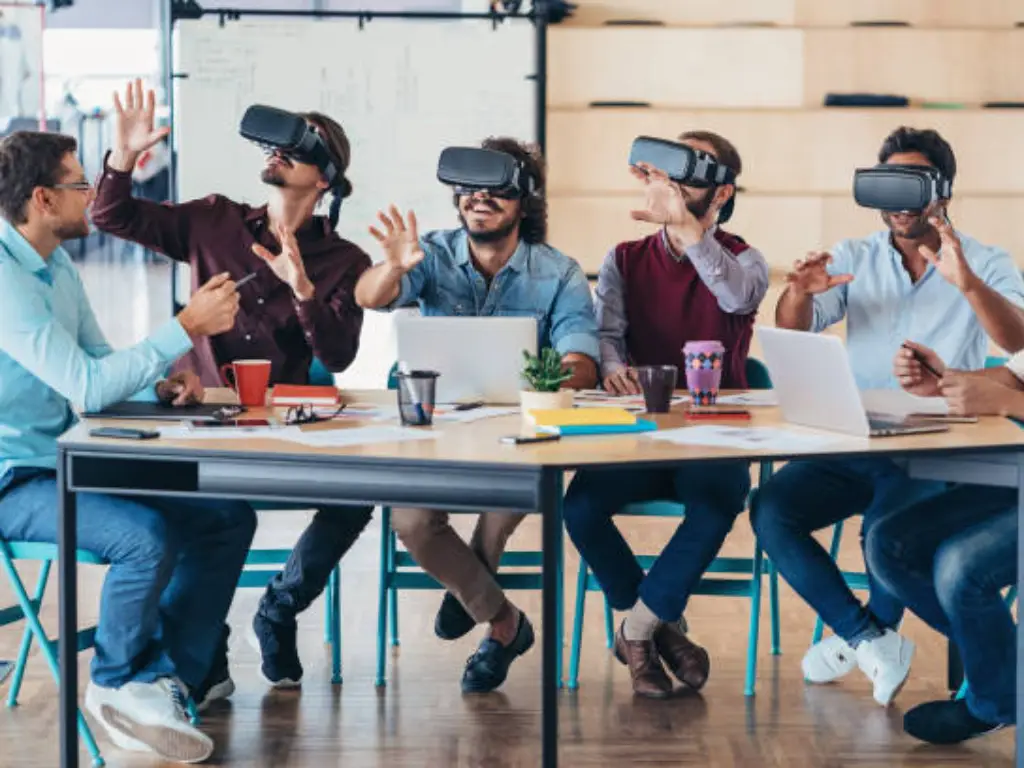
Antes de saltar a los números y los modelos de beneficios, es importante hacer una pregunta más personal: ¿Invertir en realidad virtual es la decisión correcta para usted??
El negocio de la realidad virtual no es una oportunidad única para todos. Es una industria que recompensa a los operadores prácticos., planificadores con reconocimiento de ubicación, y dueños de negocios que estén dispuestos a evolucionar con la tecnología. Si está explorando el bajo mantenimiento, modelos de ingresos pasivos, Es posible que la realidad virtual no cumpla con sus expectativas. Pero para aquellos que ven valor en el compromiso basado en la experiencia, especialmente en espacios públicos, la oportunidad es real.
Puede ser una buena opción para un negocio de realidad virtual si:
Es propietario o puede acceder a un espacio con tráfico peatonal constante. (P.EJ., quiosco del centro comercial, atracción turística, lugar del evento)
Estás buscando un negocio escalable que puedas comenzar con un presupuesto modesto.
Está dispuesto a aprender operaciones tecnológicas básicas o contratar personal de soporte ligero.
Valoras lo repetible, Experiencias de sesiones cortas que pueden generar ingresos diariamente.
Por otro lado, Es posible que la realidad virtual no sea para usted si:
Esperas ingresos pasivos sin implicación
No tienes un plan realista para atraer usuarios a tu ubicación.
No le gusta administrar ningún equipo físico., mantenimiento, o actualizaciones de software
Si te encuentras en el primer grupo, El siguiente paso es identificar qué tipo de modelo de negocio de realidad virtual le brinda más posibilidades de éxito.. Para muchos inversores primerizos, la respuesta está en los simuladores de movimiento de realidad virtual, que exploraremos a continuación.
¿Qué hace que los simuladores de movimiento de realidad virtual sean una opción rentable para los propietarios de empresas??

No todas las inversiones en realidad virtual son iguales. Uno de los sectores más rentables son los simuladores de movimiento de realidad virtual: máquinas que combinan imágenes virtuales con movimiento físico para crear experiencias totalmente inmersivas..
Por qué los simuladores de realidad virtual tienen sentido comercial:
- Precio alto de entrada por experiencia: Un paseo típico en un simulador de movimiento de realidad virtual puede costar entre 5 y 15 dólares por una sesión de 3 a 5 minutos., haciéndolos ideales para lugares con mucho tráfico, como centros comerciales, atracciones turísticas, y centros de entretenimiento.
- Pequeña huella, Gran impacto: Un solo simulador 3DOF/6DOF toma menos de 2 m2, aún ofrece cinemática, Experiencias multisensoriales que rivalizan con las grandes atracciones de los parques temáticos..
- Bajos requisitos de personal: A diferencia de las salas de escape o las configuraciones de diversión tradicionales, un miembro del personal puede gestionar varios simuladores, reduciendo los costos operativos.
- Modular, Modelo de negocio escalable: Comience con 1 o 2 simuladores y amplíelos a medida que aumenten los ingresos.. Excelente para inversiones incrementales.
- Altas tasas de repetición: Con una biblioteca de contenido VR rotativo (montañas rusas, carreras, horror, exploración espacial), puedes generar visitas repetidas.
¿Cuánto puede ganar con un negocio de simuladores de movimiento de realidad virtual??
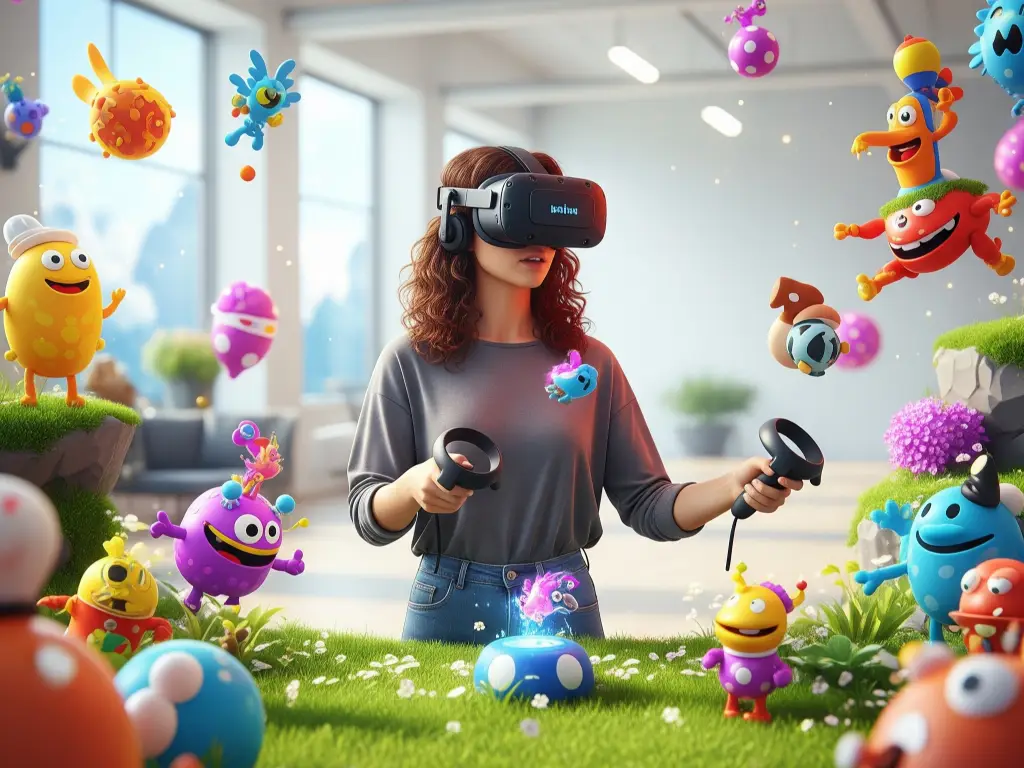
Una preocupación común entre los nuevos inversores es si un negocio de realidad virtual puede generar retornos reales sin enormes costos iniciales.. La respuesta es sí, especialmente cuando se adopta una estrategia magra., modelo de simulador de realidad virtual modular.
A continuación se muestra una comparación del mundo real entre una configuración de parque VR de 40㎡ YHY y una configuración de parque VR tradicional de 100㎡, mostrando tanto la inversión como los rendimientos esperados:
| Métrica clave | Parque YHY VR (40㎡) | Parque VR tradicional (100㎡) |
| Número de simuladores | 16 | 8 |
| Costo del equipo | $59,135.86 | $60,800 |
| Alquiler de local | $2,760/mes | $6,900/mes |
| Personal requerido | 2 | 4 |
| Costo laboral | $965/mes | $3,860/mes |
| Facturación Mensual | $96,000 | $66,000 |
| Ingresos anuales | $1,152,000 | $792,000 |
| Eficiencia espacial | 2.5× más dispositivos por ㎡ | Base |
| Período estimado de retorno de la inversión | 6–10 meses | 12–18 meses |
Por qué el modelo YHY supera a las configuraciones de realidad virtual tradicionales
El modelo de parque YHY VR está diseñado para lograr la máxima utilización y rendimiento del espacio.. Con 16 simuladores de movimiento en tan solo 40㎡, cada viaje de 3 a 5 minutos tiene un precio de entre $ 5 y $ 15, permitiendo cientos de sesiones diarias. Esta configuración:
- Reduce la inversión inicial al evitar diseños de gran tamaño y personal innecesario
- Duplica tu potencial de ingresos por metro cuadrado
- Acorta el período de equilibrio a menos 1 año en la mayoría de los casos
- Permite un escalamiento rápido: puede agregar unidades de forma modular a medida que crece el tráfico
En lugar de comprometerse con grandes arrendamientos comerciales y nóminas elevadas, Los dueños de negocios pueden comenzar de manera eficiente y expandirse según el desempeño.. Esta flexibilidad hace que el modelo de simulador sea ideal para centros comerciales., zonas turísticas, FEC, e incluso eventos emergentes móviles.
Conoce más sobre este modelo aquí: Plan de rentabilidad del parque temático de realidad virtual de YHY.
Éxito en el mundo real: Cómo los simuladores YHY VR ofrecen inmersión, Experiencias Rentables
Las soluciones de realidad virtual de YHY se han implementado a nivel mundial, desde monumentos históricos hasta centros de entretenimiento de vanguardia. A continuación se presentan dos estudios de casos destacados que muestran cómo nuestros simuladores están transformando tanto la experiencia del usuario como la rentabilidad empresarial..
Estudio de caso 1: “Cruce de la Gran Muralla” – Beijing, Porcelana
Ubicado en la sección Shuiguan de la Gran Muralla., características de esta instalación educativa de realidad virtual 20 Simuladores exclusivos “Fantasy Source Crossing” impulsados por YHYLa plataforma de movimiento 3DOF patentada y PICO Neo 3 Auriculares VR. Con ajuste de movimiento preciso y una estructura totalmente de aluminio, La silla "Ultimate Crossing" sumerge a los visitantes en una experiencia dinámica de sobrevuelo a través de la antigua maravilla de China..
La instalación ha atraído a miles de turistas mensualmente., convertir un sitio histórico en una atracción educativa de altos ingresos. Su contenido rejugable y su tema familiar han generado un fuerte tráfico repetido y retornos a largo plazo., especialmente durante las temporadas altas de turismo.
Estudio de caso 2: Parque temático YHY VR - Reino Unido

Como el primer parque temático de realidad virtual totalmente sensorial del Reino Unido que utiliza la tecnología exclusiva de YHY, este centro cuenta con YHY Racing, VR disparando, y otros simuladores personalizados. El lugar combina hardware de próxima generación, juegos multijugador originales, y elementos sociales de realidad virtual para ofrecer un destino de entretenimiento verdaderamente inmersivo.
Desde el lanzamiento, el parque se ha convertido en un lugar de visita para las familias, jugadores, y trabajo en equipo corporativo. Con precios de entradas flexibles y múltiples fuentes de ingresos, ha logrado una fuerte rentabilidad operativa, y continúa expandiéndose según la demanda.
Tipos de máquinas simuladoras de movimiento VR que puede elegir para su negocio
Aquí hay tres series líderes de simuladores de movimiento YHY VR que puede considerar para su negocio: Cruce, Carreras, y vuelo.
Serie de cruce YHY
La serie YHY Crossing ofrece una experiencia inmersiva basada en viajes utilizando la plataforma de movimiento 3DOF patentada de YHY y auriculares VR de alta calidad como el PICO Neo. 3. Diseñado para espacios educativos y de ocio., Cruce 1 y Cruce 2 Los modelos se adaptan al contenido grupal, como recorridos históricos o deportes de aventura.. Las sillas de aleación de aluminio son compactas., durable, y admite el funcionamiento simultáneo de múltiples dispositivos, ofreciendo escalabilidad, experiencias de narración repetibles con movimiento dinámico sincronizado perfectamente con imágenes de realidad virtual.
Serie de carreras YHY
Perfecto para salas de juegos y salones de deportes electrónicos, el Carreras YHY La serie combina una pantalla panorámica de triple pantalla con una plataforma de movimiento 3DOF sensible y controles realistas de retroalimentación de fuerza.. Los modelos incluyen la unidad Racing estándar., Carreras de realidad virtual (con auriculares PICO Neo), y el Racing Pro (con rueda MOZA, palanca de cambios, y freno de mano). Construcción de aluminio de primera calidad, asientos de carreras ergonómicos, y el soporte multijugador hacen que esta serie sea ideal para experiencias competitivas de carreras de simulación..
Serie de vuelos YHY
El Vuelo YHY La serie está dirigida a entusiastas de la aviación y centros de simulación., ofreciendo auténticas experiencias de vuelo a través de una robusta plataforma de movimiento 3DOF con balanceo, paso, y movimientos de guiñada. Apoyado por triple pantalla y equipado con joysticks de control de vuelo., esta serie permite a los usuarios sentir cada maniobra de manera realista. Construido con aleación de aluminio y acero inoxidable., Ofrece un rendimiento confiable adecuado para lugares de rendimiento medio a alto..
Cómo elegir el simulador de movimiento VR adecuado para su negocio
Seleccionar el simulador de movimiento VR adecuado va más allá de elegir un modelo popular: requiere alinear el equipo con sus objetivos comerciales., limitaciones de espacio, y expectativas del cliente. Estos son los factores clave a considerar:
1. Escenario empresarial y experiencia del usuario
¿Estás buscando entretenimiento familiar?, interacción turística, contenido educativo, o juegos competitivos? Elija un simulador que coincida con su caso de uso y las preferencias de su público objetivo.
2. Disponibilidad de espacio
Algunos simuladores necesitan solo entre 2 y 3㎡, mientras que otros con configuraciones de pantalla triple o cabina completa pueden requerir 5㎡ o más. Evalúe con precisión su lugar para garantizar un diseño y seguridad óptimos.
3. Expectativas de presupuesto y retorno de la inversión
Su inversión debe equilibrar la calidad y la velocidad de retorno. Los simuladores de nivel básico comienzan $4,000, pero los modelos de gama alta ofrecen una interacción más rica y una vida útil más larga.
4. Flexibilidad de contenido
Elija sistemas que admitan múltiples tipos de juegos o que puedan actualizar el contenido periódicamente. Esto ayuda a ampliar el valor de repetición y atraer clientes habituales..
5. Mantenimiento y simplicidad operativa
Busque una construcción duradera, fácil calibración, y necesidades mínimas de personal. Cuanto más ágil sea la operación diaria, cuanto más bajos sean sus gastos generales a largo plazo.
¿Debo invertir en el negocio de juegos de realidad virtual ahora o esperar?? Pensamientos finales
Si está considerando ingresar al mercado de los juegos de realidad virtual, no hay mejor momento que ahora. Con una demanda creciente de entretenimiento inmersivo y barreras de entrada más bajas, Los primeros en actuar son los que más ganarán.
En YHY, Apoyamos su negocio desde cero.. Nuestros simuladores funcionan con la exclusiva tecnología de movimiento 3DOF, que ofrece un movimiento de alta precisión que mejora la inmersión y ayuda a reducir el mareo por movimiento en realidad virtual.. Cada unidad es totalmente personalizable para adaptarse a las necesidades de su marca o lugar..
Incluso después de la instalación, nos quedamos contigo. Todos los productos YHY vienen con actualizaciones de juegos gratuitas., apoyo técnico, y actualizaciones continuas del sistema, brindándole una verdadera experiencia de servicio integral.
Necesita ayuda para elegir el equipo de realidad virtual adecuado para su negocio?
Contacta con nuestro equipo para una consulta gratuita y apoyo para el plan de negocios.
Preguntas frecuentes
1. ¿Es rentable iniciar una sala de juegos de realidad virtual en 2026?
Sí. Con una creciente demanda de entretenimiento inmersivo y menores costos de hardware, Muchas salas de juegos de realidad virtual pueden lograr un retorno de la inversión en un plazo de 6 a 12 meses, especialmente aquellas que utilizan simuladores modulares con una alta rotación de sesiones..
2. ¿Qué diferencia a los simuladores YHY de otros del mercado??
Los simuladores YHY cuentan con tecnología de movimiento 3DOF exclusiva para una mayor suavidad., movimientos más precisos. También están optimizados para reducir el mareo y vienen con contenido personalizado., actualizaciones de juegos gratis, y soporte técnico completo.
3. ¿Puedo personalizar el diseño del simulador para mi lugar o marca??
Absolutamente. YHY ofrece opciones de personalización completas, incluido el diseño exterior, elementos de marca, y contenido localizado para ayudarle a crear una experiencia verdaderamente diferenciada.
4. ¿La realidad virtual tiene futuro??
Sí. La realidad virtual se está expandiendo rápidamente en los juegos, educación, y turismo. Con hardware mejorado como la plataforma de movimiento 3DOF de YHY y una creciente demanda de experiencias inmersivas, La realidad virtual es ahora un negocio escalable.

